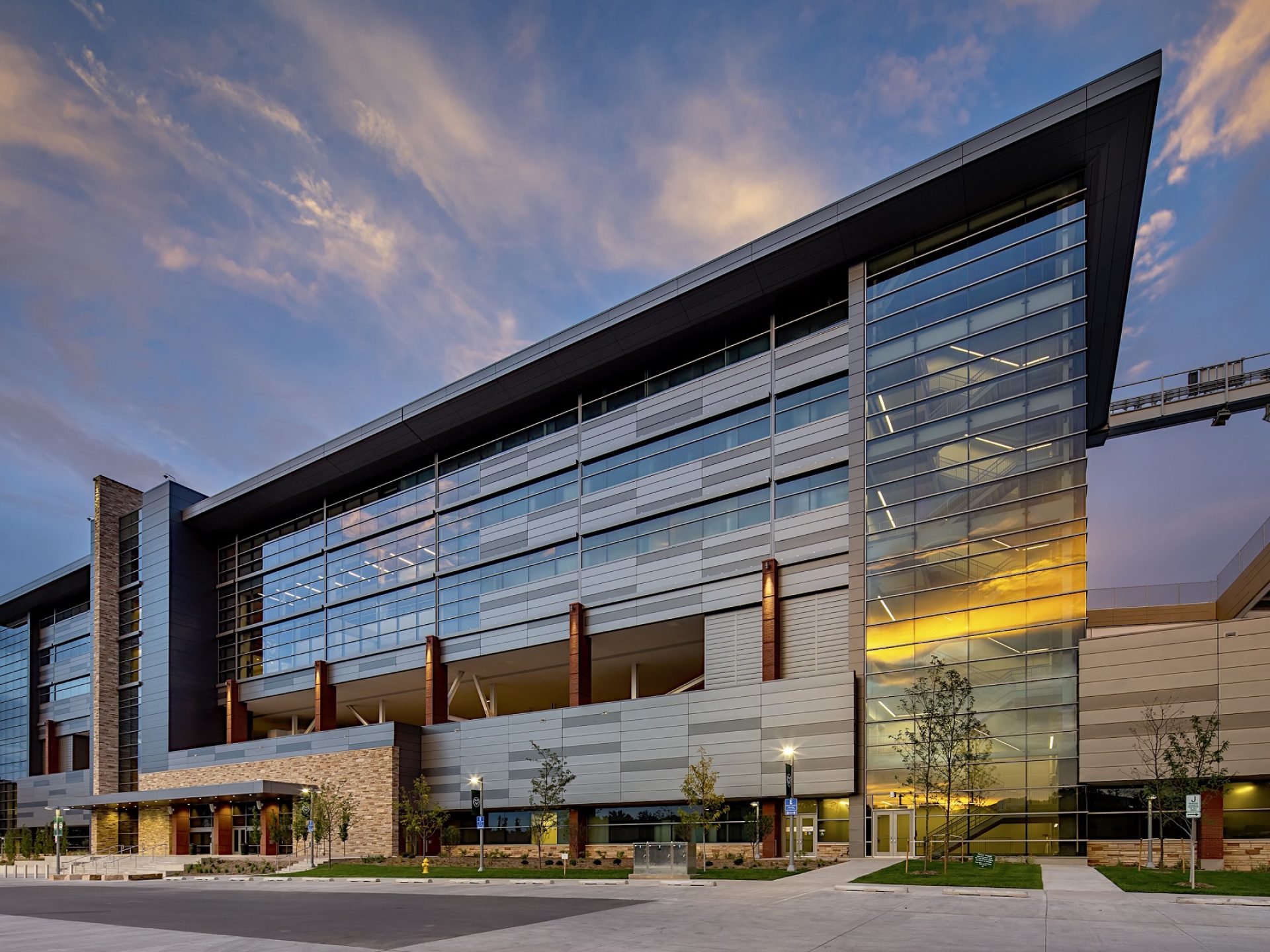August 25, 2017
After Half a Century, Ram Football Returns to Colorado State’s Campus

Four miles separate the old and new homes of Ram football, but they might as well sit on opposite sides of the Rockies.
Nestled along Horsetooth Mountain, Colorado State’s Hughes Stadium served up beautiful football vistas for nearly 50 years. Legendary coach Sonny Lubick guided the Rams to their winningest stretch in program history on its turf during the 90s and early 2000s. Yet something was still missing.
Fans needed only squint to the east for a hint. College campuses provide an atmosphere unlike any other in the country. Ideas and energy bounce off one another. School pride brings together young and old. In 2014, we helped Baylor University reconnect football with campus after 60 years with an award-winning stadium that hugs the Brazos River. We planned to do the same in Fort Collins.

For all of Hughes’ history, it was isolated from many of these intimate qualities that make college athletics special. Its crowds could come and go on game days without ever stepping foot on campus, a stark reality with implications beyond football. A key part of the college experience, after all, comes post-graduation with pilgrimages back to the old stomping grounds. Lose that experience and you start to lose touch with your alma mater.
It was clear that CSU needed to reinvigorate athletics’ role in the spirit of its campus. To get there, my Populous colleagues and our partners at CSU needed to blur the line between athletics, academics and community like few have done before.
Visit the new on-campus stadium and you’ll notice something strange at first: it doesn’t necessarily look like a stadium. Its mid-century modern aesthetic blends in with surrounding campus architecture. Strong horizontal lines balance out vertical elements inspired by Fort Collins’ connection to the Front Range of the Rocky Mountains.
“You cannot fully appreciate the design until you understand the campus and the community,” says my Populous teammate Austin Welsh. “They embrace the outdoors and are very much inspired by the collective beauty of the Front Range.”
This fact became clearer as Fort Collins became a home away from home for our team. As a result, our design intentionally shares the spotlight. The stadium’s highest point measures a modest 123 feet. It recognizes it’s only one piece of the campus tapestry, a piece that impacts more than football.

Enrollment at CSU has grown substantially over the past decade, leading to increased demand for academic space. The project presented a once-in-a-lifetime opportunity for the university to address that need cost-effectively while changing the definition of an on-campus stadium. The result is a structure that’s part academic and part athletic.
To that end, two cornerstones on the stadium’s northern edge act as beacons. On the northwest corner (pictured above) is the entrance to the football program’s new home. Running underneath the west stands, it features elite sports medicine and training spaces like a 9,100-square-foot weight room.
Opposite it on the northeast corner is the entrance to an 80,000-square-foot Alumni and Academic Center that spans the length of the east stands. Starting this fall semester, students will stroll in from nearby dorms for classes and advising. The Alumni Center, meanwhile, will serve as a place of pride for Colorado State’s 215,000 alumni as it hosts year-round meetings and events.
By integrating these spaces into the stadium project, the university added capacity and saved on construction costs. More importantly, it brings the larger CSU community into contact with the stadium on a regular basis.
“I fully expect it to become one of the most popular gathering venues in the area,” CSU Athletic Director Joe Parker said earlier this year.
Come game day, guests will be greeted by expansive outdoor environments that cater to a distinctly Colorado lifestyle. Just beyond the north end zone, for example, the New Belgium Porch acts as a de facto front door and opens up the stadium to campus. Fans of the hometown brewery can walk up for a craft beer during the game and throughout the year.
Heading deeper into the stadium, small touches pay homage to the local culture. There’s the collection of locally-sourced materials, most of which came from locations within 500 miles. References to Colorado’s “fourteeners,” the state’s 53 peaks that rise at least 14,000 feet above sea level, act as landmark locations around the concourses.
Speaking of the concourses, nothing comes between them and the playing field, meaning fans can grab a bite while not losing a connection to the game.
Brand new experiences await throughout the space, but the stadium is also just one part of CSU’s continued transformation. The entire campus is growing. The new stadium will help introduce more alumni and the larger Fort Collins community to that fact. Or as Parker put it recently:
Have you seen this campus lately? You can if you plan to attend football games. https://t.co/c4uGFaja8e
— Joe Parker (@JoeParkerCSU) August 15, 2017
♦♦♦
Lorem ipsum dolor sit amet consectetur, adipisicing elit. Non facere corporis et expedita sit nam amet aut necessitatibus at dolore enim quis impedit eius libero, harum tempore laboriosam dolor cumque.
Lorem, ipsum dolor sit amet consectetur adipisicing elit. Illo temporibus vero veritatis eveniet, placeat dolorem sunt at provident tenetur omnis, dicta exercitationem. Expedita quod aspernatur molestias eum? Totam, incidunt quos.